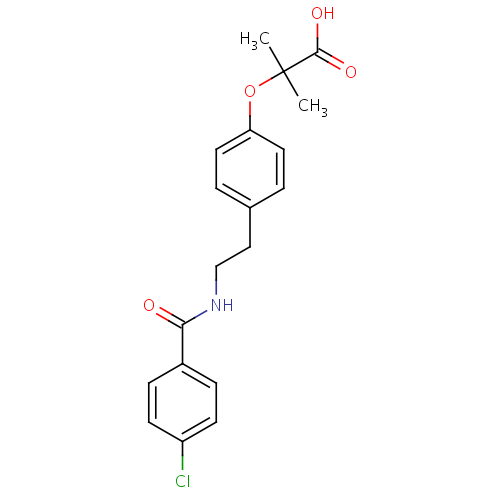| Indication | For the treatment of primary hyperlipidaemia types IIa, IIb, III, IV and V (Fredrickson classification) corresponding to groups I, II and III of the European Atherosclerosis Society guidelines - when diet alone or improvements in lifestyle such as increased exercise or weight reduction do not lead to an adequate response. Also for the treatment of secondary hyperlipidaemias, e.g. severe hypertriglyceridemias, when sufficient improvement does not occur after correction of the underlying disorder (e.g. diabetes mellitus). |
| Pharmacodynamics | Bezafibrate is an antilipemic agent that lowers cholesterol and triglycerides. It decreases low density lipoproteins and increases high density lipoproteins. Bezafibrate lowers elevated blood lipids (triglycerides and cholesterol). Elevated VLDL and LDL are reduced by treatment with bezafibrate, whilst HDL-levels are increased. The activity of triglyceride lipases (lipoprotein lipase and hepatic lipoproteinlipase) involved in the catabolism of triglyceride-rich lipoproteins is increased by bezafibrate. In the course of the intensified degradation of triglyceride-rich lipoproteins (chylomicrons, VLDL) precursors for the formation of HDL are formed which explains an increase in HDL. Furthermore, cholesterol biosynthesis is reduced by bezafibrate, which is accompanied by a stimulation of the LDL-receptor-mediated lipoprotein catabolism. Elevated fibrinogen appears to be an important risk-factor, alongside the lipids, smoking and hypertension, in the development of atheroma. Fibrinogen plays an important role in viscosity, and therefore blood flow, and also appears to play an important role in thrombus development and lysability. Bezafibrate exerts an effect on thrombogenic factors. A significant decrease in elevated plasma fibrinogen levels can be achieved. This may lead, amongst other things, to a reduction in both blood and plasma viscosity. Inhibition of platelet aggregation has also been observed. A reduction in blood glucose concentration due to an increase in glucose tolerance has been reported in diabetic patients. In the same patients, the concentration of fasting and postprandial free fatty acids was reduced by bezafibrate. |
| Mechanism of action | Like the other fibrates, bezafibrate is an agonist of PPARα; some studies suggest it may have some activity on PPARγ and PPARδ as well. |
| Absorption | Bezafibrate is almost completely absorbed after oral administration. The relative bioavailability of bezafibrate retard compared to the standard form is about 70%. |
| Volume of distribution | Not Available |
| Protein binding | 94-96% of bezafibrate is bound to protein in human serum. |
| Metabolism | Hepatic. |
| Route of elimination | Not Available |
| Half life | 1-2 hours |
| Clearance | Not Available |
| Toxicity | Not Available |
Saturday, October 13, 2012
Pharmacology Of Bezafibrate
Labels:
Pharmacology of Drugs,
UNCLASSIFIED
Subscribe to:
Post Comments (Atom)

No comments:
Post a Comment